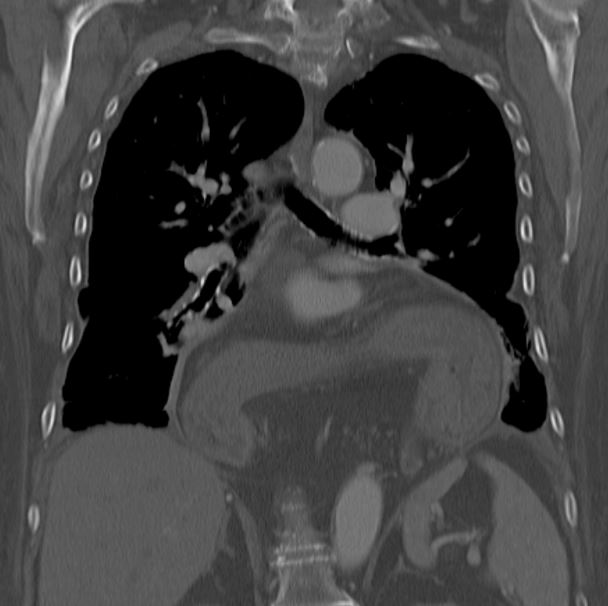A 70 y.o. woman presents with chest pain and a positive troponin.
what do you see on her xray?
What is the cause of her pain?
Our patient had a large paraesophageal hernia and no coronary artery disease on cath. Hiatal hernias are categorized as being either paraesophageal or sliding. In a paraesophageal hernia the GE junction is in place at the level of the diaphragm but part of the stomach pushes into the chest beside the esophagus. In a sliding hiatal hernia the GE junction protrudes into the chest. Only 5% of hiatal hernias are paraesophageal.
EKG of our patient unchanged from 2014
Patients with paraesophageal hernias often have chronic symptoms of early satiety because a meal distends the thoracic stomach and causes chest pain. The hernia may also cause gastric erosions and ulcer. Occasionally acute ischemia related to torsion can cause intense pain, perforation and death. Skinner and Belsey reported a series of 31 patients with paraesophageal hernias that were treated medically because of minimal symptoms and six patients died of complications including strangulation, perforation, exsanguination or acute dilation of the intrathoracic stomach. For this reason, generally, a surgical repair is warranted.
Sliding hernias where the GE junction slides into the chest with the stomach are more likely to cause esophagitis or stricture associated with gastroesophageal reflux.
a paraesophageal hernia on CT
Esophagoscopy confirmed that the hernia was paraesophageal with the GE junction in place. Erosions were seen in the thoracic stomach and the pt was treated with an NG to decrease distention and a proton pump inhibitor. Her symptoms improved and she was scheduled for surgery. Her trop peaked at 0.09 presumably from demand ischemia since her cath was normal.
Shafii A, Agle S, Zervos E. Perforated gastric corpus in a strangulated paraesophageal hernia: A case report.2009. Journal of Medical Case Reports, 3(6507). DOI:10.1186/1752-1947-3-6507.
Dunn D, Quick G. Incarcerated paraexophageal hernia. American Journal of Emergency Medicine . 1990. Vol 8(1). 36-39.
Pearson F, Cooper JD, Ilves R et al Massive hiatal hernia with incarceration: A report of 53 cases. Ann Thorac Surg 1983;35:45-51.
Skinner DB, Belsey R. Surgical management of esophageal reflux with hiatus hernia: Long-term results with 1,030 patients. J Thorac Cardiovasc Surg 1967;53:33-54.


